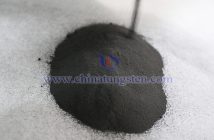High-density tungsten alloy, a functional material with tungsten as its base (85%–99%) combined with metals like nickel, iron, and copper through powder metallurgy sintering, boasts a density of 16–18.5 g/cm3 along with high strength, wear resistance, and corrosion resistance. In the automotive field, its core advantages as a counterweight block include precise weight adjustment in a small volume, minimizing space usage; strong chemical stability to withstand the high temperatures and humidity of engine compartments; and eco-friendliness, aligning with global automotive industry green standards.

In engine applications, tungsten alloy counterweight blocks are primarily used for dynamic balancing of crankshafts and drive shafts. During high-speed crankshaft rotation, unbalanced centrifugal forces can cause severe vibrations; tungsten alloy blocks, with precisely calculated positions and weights, counteract these inertial forces, reducing engine noise and wear. For drive shafts, particularly in four-wheel-drive or high-performance vehicles with high speeds and heavy loads, counterweights are added to shaft tubes or flange plates. The alloy’s high density enables efficient balancing in limited spaces, preventing body shake during high-speed driving.
Wheel balance weights represent a typical chassis application for tungsten alloy. Lead alloy weights, due to their toxicity and lower density, are being phased out, while tungsten alloy weights offer a smaller volume for the same weight, allowing discreet attachment to wheel rims, reducing wind resistance and air turbulence. Additionally, in high-end models, suspension systems (e.g., multi-link arms, anti-roll bars) incorporate tungsten alloy counterweights to adjust inertial parameters, optimizing body roll angles during cornering and enhancing handling stability.

In performance cars and racing, tungsten alloy counterweight blocks are crucial for precise center-of-gravity control. Sports cars often add weights to the front axle or trunk to improve steering response, while rally cars symmetrically place weights on both sides based on track conditions to boost grip on muddy or uneven surfaces. In electronic systems, onboard sensors like radar and cameras, sensitive to vibrations, require counterweights on mounting bases. The high density of tungsten alloy effectively dampens road-induced vibrations, ensuring the sensing accuracy of precision components like LiDAR.



